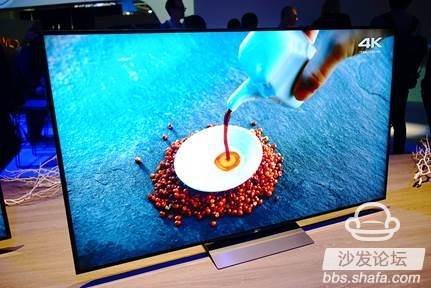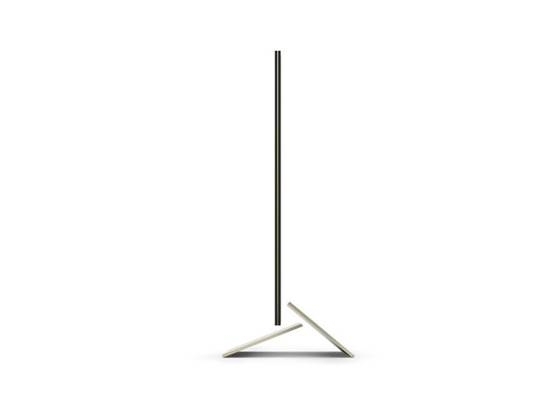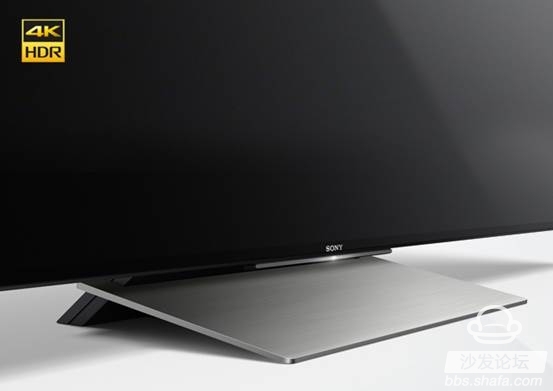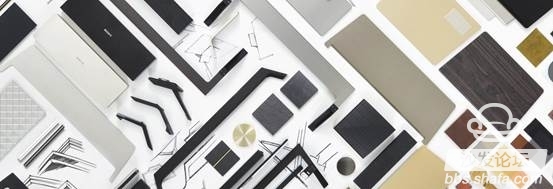At this CES2016 exhibition, the new HDR TV from Sony BRAVIA became one of the most attractive focuses not only because of Sony's strong performance in the quality of the picture, but also the breakthrough in the design of the new TV. Amazed. Sony TV's slim body and stylish overall shape create a different kind of artistic temperament. In the Sony booth, we had the opportunity to interview the Director of the First Studio of the Sony Creative Center, Mr. Shino Kota, who is also the overall planner of Sony's new HDR TV design concept.

When designing the new BRAVIA TV, a brand-new design concept was adopted throughout: Slice of Living, meaning “Minimalist Life†in Chinese. When designing television appearances, designers extracted the concept and integrated it into the product.
In the indoor home environment, there are a lot of plate-like objects and the aesthetic appearance of these plate-like objects is presented. Through the combination of their natural colors and textures, it is possible to create a space that is very adaptable to modern style. This is the origin of Sony's concept of minimalist life and the essence of the new BRAVIA TV appearance. “Products designed through this concept can not only bring a kind of decoration to the user, but also bring about an experience. We just want to create this kind of experience in real life.†Mr. Haruno Fumano told reporters.

In the concept of "minimalist life", there are three main supporting elements. The first is the minimalistic board concept mentioned above. A television is like a combination of multiple flat panels. The second element is the material. The material is also mainly reflected in the color, texture, touch of the surface, etc., as well as the material pleasure brought by the combination of these elements. The third element is the feeling of lightness and floating.

Mr. Takino said that in the "Minimalist Life" design, the three plates that make up a TV are not simply assembled together, but they must take into consideration its weight, width, height, position, and other factors. A good balance gives a very balanced feel to the visual, while at the same time ensuring the firmness in practical use. After many discussions, designers finally determined the best design status.

Today's TV designs are all about thinness, narrow borders, and so on, so in some people's eyes, the creative space left for designers is getting smaller and smaller, but Mr. Junichi Kobayashi does not think so. Compared with a few years ago, the frame of television has indeed become narrower and narrower, and there is indeed a certain degree of difficulty in the design. "But we should look at it a little bit wider. We design not only as a product to design, but design the user's viewing experience as a whole design. So we can consider the design point is still more. Of course we think The deluxe TV design can not affect the user's experience when watching TV, so it must be done so that it will not be disturbed when viewed, and will not be interfered with by some extra designs because it is mainly based on the content at the same time. We also need to be able to display TV as a furniture or a decorative function in the home when we are not watching TV."

Most previous generations of Sony TVs used a wedge-shaped stand base, and the newly introduced TVs use completely different base styles. In fact, the change is more than a base, Sony designers in the design process from the overall situation, the optimization of the design language of the TV. Mr. Takino said: “Our design has been considered from an overall aspect this year. We have many sockets behind many of our TVs. It looks a bit cluttered from behind, but this generation of new products does not see the socket from behind. Those power cords are hidden behind by clever design, so these are also hopeful to show to everyone."
With the gradual appearance of TV appearance, the appearance of Sony's new BRAVIA TV allowed us to revisit the industrial design foundation of Sony's veteran strength manufacturer and its innovative spirit of not making compromises with the mainstream. I believe that with these profound heritage and extraordinary quality, Sony's future will certainly go more and more broad, more and more smooth.

Director of Studio I, Sony Creative Center
When designing the new BRAVIA TV, a brand-new design concept was adopted throughout: Slice of Living, meaning “Minimalist Life†in Chinese. When designing television appearances, designers extracted the concept and integrated it into the product.
In the indoor home environment, there are a lot of plate-like objects and the aesthetic appearance of these plate-like objects is presented. Through the combination of their natural colors and textures, it is possible to create a space that is very adaptable to modern style. This is the origin of Sony's concept of minimalist life and the essence of the new BRAVIA TV appearance. “Products designed through this concept can not only bring a kind of decoration to the user, but also bring about an experience. We just want to create this kind of experience in real life.†Mr. Haruno Fumano told reporters.

In the concept of "minimalist life", there are three main supporting elements. The first is the minimalistic board concept mentioned above. A television is like a combination of multiple flat panels. The second element is the material. The material is also mainly reflected in the color, texture, touch of the surface, etc., as well as the material pleasure brought by the combination of these elements. The third element is the feeling of lightness and floating.

"Minimalist life" design concept
Mr. Takino said that in the "Minimalist Life" design, the three plates that make up a TV are not simply assembled together, but they must take into consideration its weight, width, height, position, and other factors. A good balance gives a very balanced feel to the visual, while at the same time ensuring the firmness in practical use. After many discussions, designers finally determined the best design status.

Today's TV designs are all about thinness, narrow borders, and so on, so in some people's eyes, the creative space left for designers is getting smaller and smaller, but Mr. Junichi Kobayashi does not think so. Compared with a few years ago, the frame of television has indeed become narrower and narrower, and there is indeed a certain degree of difficulty in the design. "But we should look at it a little bit wider. We design not only as a product to design, but design the user's viewing experience as a whole design. So we can consider the design point is still more. Of course we think The deluxe TV design can not affect the user's experience when watching TV, so it must be done so that it will not be disturbed when viewed, and will not be interfered with by some extra designs because it is mainly based on the content at the same time. We also need to be able to display TV as a furniture or a decorative function in the home when we are not watching TV."

"Minimalist life" design concept
Most previous generations of Sony TVs used a wedge-shaped stand base, and the newly introduced TVs use completely different base styles. In fact, the change is more than a base, Sony designers in the design process from the overall situation, the optimization of the design language of the TV. Mr. Takino said: “Our design has been considered from an overall aspect this year. We have many sockets behind many of our TVs. It looks a bit cluttered from behind, but this generation of new products does not see the socket from behind. Those power cords are hidden behind by clever design, so these are also hopeful to show to everyone."
With the gradual appearance of TV appearance, the appearance of Sony's new BRAVIA TV allowed us to revisit the industrial design foundation of Sony's veteran strength manufacturer and its innovative spirit of not making compromises with the mainstream. I believe that with these profound heritage and extraordinary quality, Sony's future will certainly go more and more broad, more and more smooth.